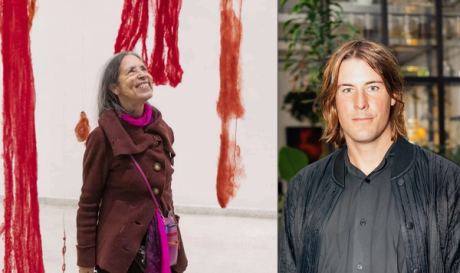
The Museum of Contemporary Art Los Angeles (Moca) announces grants of $100,000 to two artists as part of its inaugural Eric and Wendy Schmidt Environment and Art Prize. This year’s recipients are Julian Charrière, who is based in Berlin, and Cecilia Vicuña, who lives and works between New York and Santiago, Chile. The artists will receive the unrestricted honoraria along with institutional support from Moca to create projects focusing on climate change and environmental justice, resulting in an exhibition in the next two years.
As with many museum initiatives, this one was incubated for a long time before hatching. “Our Environmental Council was launched in 2020, a year before I arrived,” Johanna Burton, Moca’s director, tells The Art Newspaper. “I happily took on the mantle of this work. We enlarged the sphere to include more programming, including a series of conversations that we do annually, and we hired a full-time sustainability strategist.”
Moca’s board chair, Maria Seferian, had told Burton that the philanthropists Eric Schmidt (the former chief executive of Google) and his wife, Wendy, were interested in working with a museum. “They’re very active in the space of environmental justice,” says Burton, “and they’ve been engaging artists for a long time.” Seferian and Burton drew up a proposal, and the Schmidt Family Foundation agreed to fund the project for three rounds, announced in June. Moca put together a nominating committee and a jury of five—including Burton and Seferian—to select a finalist. But the jury found two very strong contenders, so strong that the foundation agreed to fund them both.
Vicuña interweaves cultural history and Indigenous knowledge into her installations. “Cecilia has been, for decades, doing this work and laying the ground for others,” Burton says. “It’s not like we’re recognising her for the first time, but what we are recognising is her desire to do this work here in this city, thinking about the relationship between Chile and LA. She has not had a major show here before.”
Charrière, meanwhile, is known for film, photography and installations with environmental themes. “He’s a younger artist, but he is also really devoted to this work,” Burton says. “It was exciting to learn that there were different kinds of equally deserving artists at different moments in their careers.”
Charrière plans to build an immersive, interactive installation that investigates planetary water systems for his Moca project. “Art, perhaps more than anything else, has the potential to expand the boundaries of the climate-crisis debate,” he says. “The climate crisis isn’t solely an environmental issue; it’s also a crisis of imagination, a crisis of sensibility. Art has the power to recalibrate our perspective and rethink our place within the world—a shift that’s crucial if we are to confront the deeper crises at hand.”
Vicuña agrees. “Art and the environment are one,” she says. “The ‘environment’ is not ‘out there’. It is us, the sum total of our interactions. Our awareness, and lack of awareness impacts the environment, our desire to see what we are doing or not to see it. We are now choosing between destruction and reparation.” Her work for Moca, titled Quipu of Encounters: The Dream of Water [Quipu de encuentros: El sueño del agua], will integrate ancient Indigenous Andean methods such as quipu, which uses knotted cords as a form of communication.
The $100,000 grants do not include materials and other supporting costs, which will be paid to the artists separately. In fact, Burton says, there is also a line item for consulting experts on environmental issues, to be used as needed. “We would support them like any artist that we invite to produce with us at the museum, either in the form of exhibitions or public programmes,” she says. “There will be a curator and team assigned who will help to execute a full-fledged presentation of the artist’s work.”
The Eric and Wendy Schmidt Environment and Art Prize will be awarded every two years until 2028, resulting in four prizes—the inaugural year having two recipients—with exhibitions into 2030.







